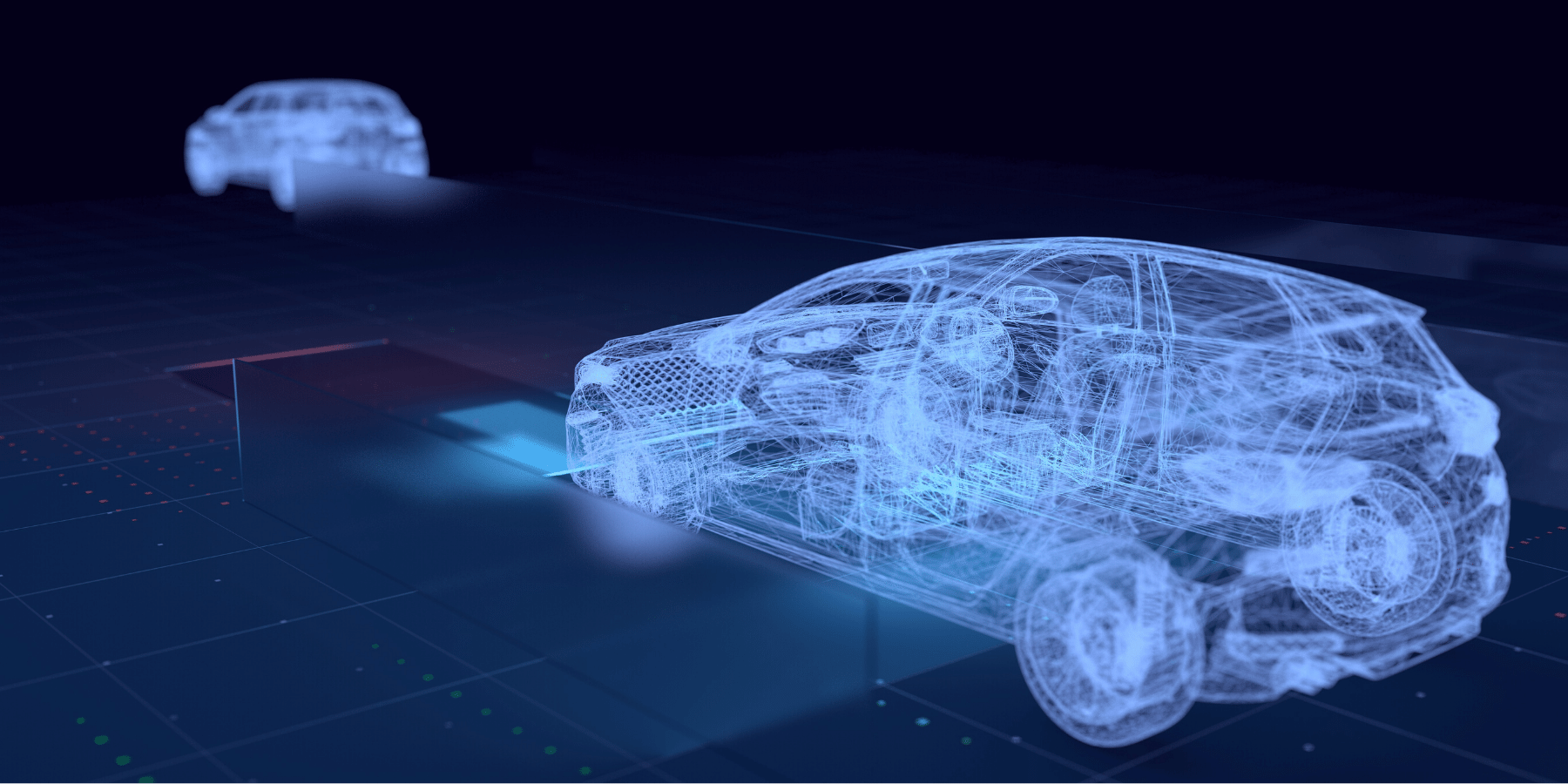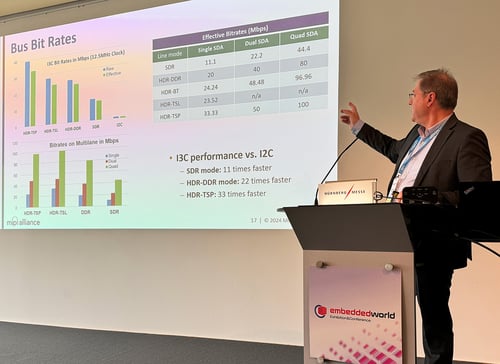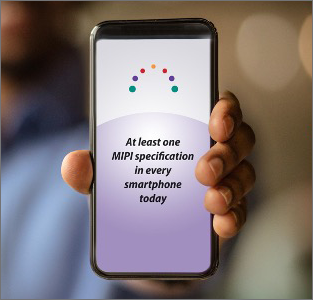MIPI A-PHY®

Developed by: A-PHY Working Group
Long-reach SerDes physical layer specification advancing ADAS, ADS, IVI and other automotive applications
Quick Facts
-
Key Highlights
- Targeted for advanced driver assistance systems (ADAS), autonomous driving systems (ADS), in-vehicle infotainment (IVI) and other surround-sensor applications
- Simplifies integration of lidar, radar and cameras for limited and full vehicle autonomy
- Improves connectivity for high-resolution safety and infotainment displays
- Supports functional safety and security
- Also well-suited for Internet of Things (IoT), industrial and other applications
-
Use Cases
- ADAS
- ADS
- Human machine interfaces (HMI)
- In-vehicle infotainment (IVI)
-
A-PHY Ecosystem
View the list of companies designing products based on MIPI A-PHY.
-
Sign Up for Automotive News
Stay up to date with MIPI automotive activities and new specifications in the MIPI Automotive SerDes Solutions (MASS) framework.
Get the Specification
-
Current Version
MIPI A-PHY® v2.0 (July 2024)
Member version -
Related Specifications
Power Over A-PHY v1.1 (November 2025)
Member version -
App Notes & Reference Compliance Test SuiteApplication Notes:
- Application Note for MIPI A-PHY® Specification v1.0 and v1.1: Power Over A-PHY
- Application Note for MIPI A-PHY® Specification v1.0 and v1.1: Profile 2 Re-Training and Re-Transmission
- Application Note for MIPI A-PHY Specification v1.0: Profile 1 and Profile 2
Compliance Test Suite (CTS):
-
Previous Versions
MIPI A-PHY® v1.1.1 (May 2023)
Member versionMIPI A-PHY® v1.1 (December 2021)
Member versionMIPI A-PHY® v1.0 (September 2020)
Member version | IEEE 2977-2021
| IEEE 2977-2021
Industries
Overview
MIPI A-PHY® is a long-reach serializer-deserializer (SerDes) physical layer interface for automotive applications, including ADAS, ADS and other surround-sensor applications, including cameras and in-vehicle infotainment (IVI) displays.
The specification provides an asymmetric data link in a point-to-point or daisy-chain topology, with high-speed unidirectional data, embedded bidirectional control data and optional power delivery, all over a single cable. This reduces wiring, cost and weight, and allows designers to optimize systems for the performance, cost and complexity required by their use cases, providing scalability and flexibility to meet a broad range of speed and design needs. For integration with existing network backbones, A-PHY complements Ethernet, CAN, FlexRay and other interfaces.
In addition to automotive uses, the specification can be well-suited for applications such as IoT and industrial.
MIPI A-PHY was developed by the MIPI A-PHY Working Group and is available to MIPI Alliance members. A-PHY v1.0 was also adopted as an IEEE standard in June 2021 and is available as IEEE 2977-2021.
For information about becoming a member, see Join MIPI.
Fundamental Features
- Asymmetric data link layer with point-to-point or daisy-chain topology
- Up to 15-meter reach
- 5 downlink speed gears in v1.0 and v1.1 (2, 4, 8, 12 and 16 Gbps). Version 2 adds G6 and G7 for 24 and 32 Gbps.
- 2 uplink speed gears (100 and 200 Mbps) in v1.0 and v1.1. Version 2.0 adds an additional gear to support up to 1.6 Gbps.
- Dual-downlink configuration option using Star Quad (STQ) cables
- Ultra-low packet error rate (PER) of 10-19 for unprecedented reliability over vehicle lifetime
- High-speed data, control data and optional power share the same physical wiring
- Reduces complexity, cost, wiring and weight
- With protocol adaptation layers (PALs), provides support for CSI-2, DSI-2, and VESA’s DP and eDP protocols, without a separate software stack. PALs for I2C, GPIO, Ethernet, SPI and I3C* command and control channels are also supported (* in development)
- Ultra-high immunity to automotive EMC effects by virtue of a unique PHY-layer retransmission system
MASS Framework
MIPI A-PHY serves as the foundation of an end-to-end connectivity framework, MIPI Automotive SerDes Solutions (MASS), designed to simplify the integration of cameras, sensors and displays, while also incorporating functional safety and security. Higher-layer MIPI protocols, such as Camera Serial Interface (MIPI CSI-2®) and Display Serial Interface (MIPI DSI-2™), are already used to connect sensors and displays to domain ECUs and other onboard computers in many vehicles. They typically are transported over MIPI C-PHY™ or D-PHY™ shorter-reach physical layers and use "bridge" solutions to connect to proprietary long-reach PHYs. With the use of adaptation layers, these higher-layer protocols can now run natively over A-PHY, eliminating the need for these proprietary bridges.
Latest Versions
Version 2.0
A-PHY v2.0 doubles the supported baud rate from 4 GBaud to 8 GBaud, enabling support of two more downlink gears at 24 Gbps and 32 Gbps over a single cable, and enhancing the current 12 Gbps and 16 Gbps gears to support PAM4. Version 2.0 also adds an uplink gear supporting 1.6 Gbps.
With these additions, A-PHY v2.0 addresses the increased bandwidth required by automotive zonal architectures, and enables a 1G Ethernet control channel with up to 32 Gbps video stream.
Version 1.1.1
Version 1.1.1 of the A-PHY specification applies all corrections in the Errata 01 for A-PHY v1.1, and replaces deprecated technical terms with more inclusive wording.
MIPI A-PHY v1.1, adopted in 2021, introduced several enhancements and is fully backward compatible with v1.0, allowing devices using both releases to coexist on the same network.
A-PHY v1.1 doubled the total downlink data rate supported by A-PHY from 16 to 32 Gbps by adding support for Star Quad (STQ) shielded dual differential pair cables that provide dual differential pairs of conductors within a single shielded jacket. This enables two A-PHY ports over a single cable, saving cost, weight and complexity compared with using two separate coaxial or shielded twisted pair cables.
A-PHY v1.1 also added optional PAM4 encoding for downlink gears G1 and G2, with data rates of 2 Gbps and 4 Gbps, respectively. PAM4 encoding features lower modulation bandwidth for sub-1 GHz operation, allowing manufacturers to more easily migrate to A-PHY while using either legacy cables on current platforms or lower-cost cables on new platforms.
In v1.1, the maximum uplink data rate doubled to 200 Mbps, providing more bandwidth for command and control of automotive peripherals.






